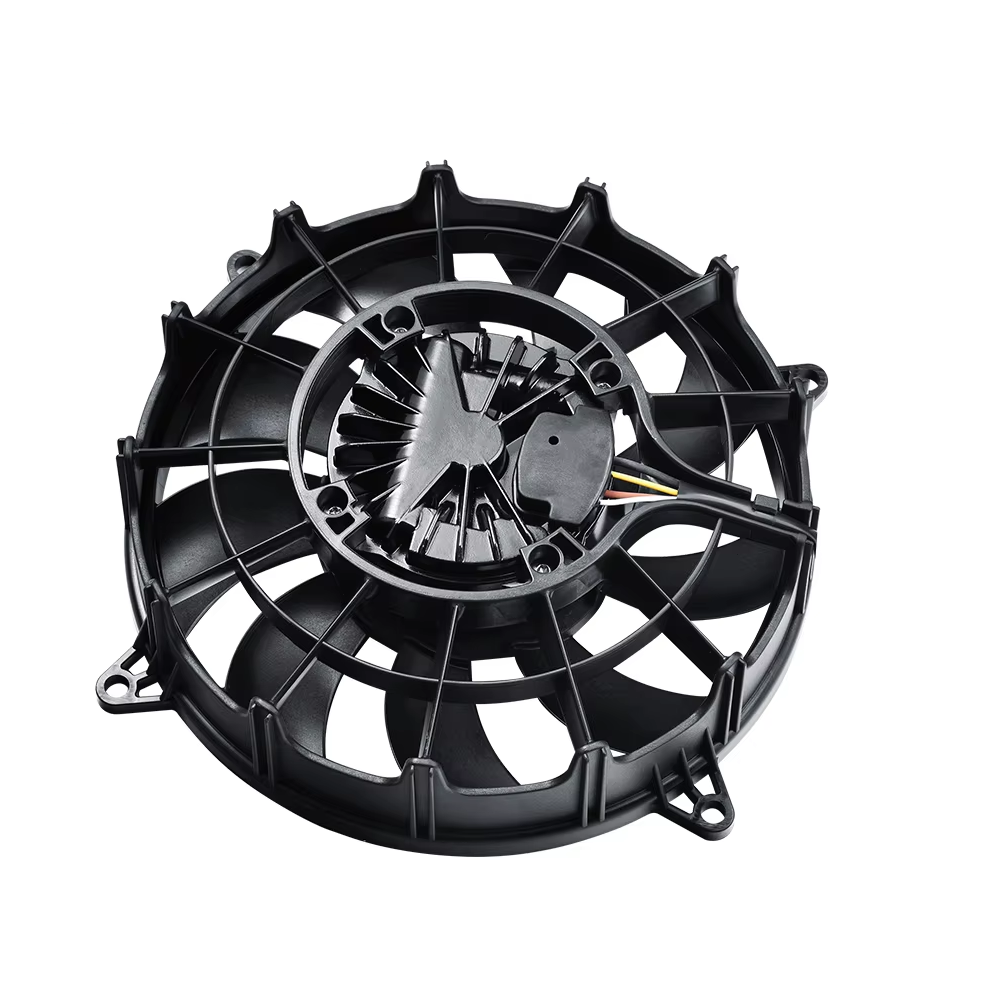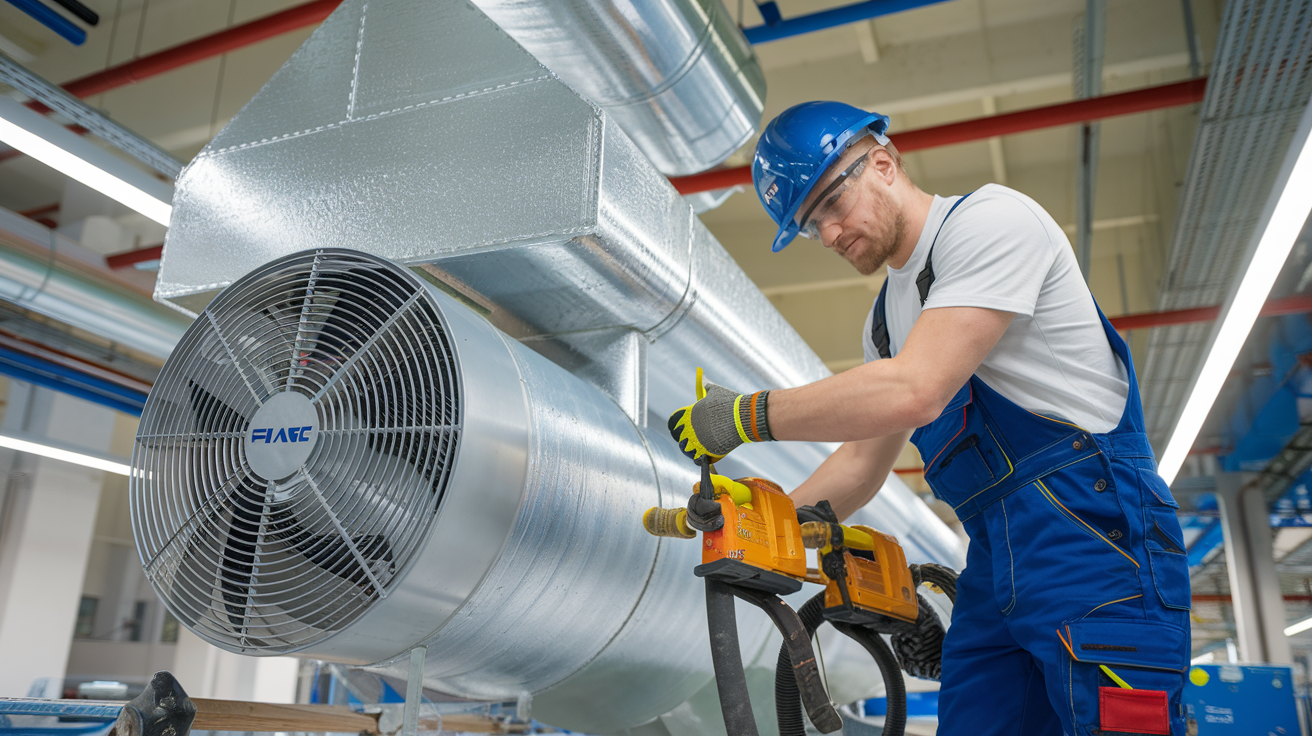Core Difference: Pressure vs. Flow
Let’s cut through the jargon. The fundamental choice between an axial fan and a centrifugal blower (what most folks mean by “blower”) boils down to pressure and airflow direction.
-
Axial Fans: Think propeller. They move air parallel to the fan shaft, pushing large volumes of air in a straight line. Great for moving lots of air where there’s minimal resistance (low static pressure). Examples: Cooling electronics in a server rack, ventilating an attic, spot cooling machinery. Like our FY-ECAxial series, designed for high-volume, low-restriction airflow.
-
Centrifugal Blowers: Think hamster wheel or squirrel cage. Air enters axially but is flung outwards by impellers and exits perpendicularly to the intake. This creates higher pressure. They excel at pushing air against resistance – through ducts, filters, heat exchangers, or packed enclosures. Examples: Furnace blowers, fume extraction, drying systems, air curtains.
If your main job is moving massive air volumes freely (low pressure), axial wins. If you need to push air through something (high pressure), the blower is your tool.
Energy Efficiency Showdown: Watts Matter
Energy costs bite. Choosing the right fan type directly impacts your power bill. Here’s the reality, backed by standard test data (AMCA 210, ISO 5801):
-
Axial Fans (High Flow, Low Pressure): Generally, axial fans are kings of moving large volumes of air efficiently when static pressure is low (say, 0 – 75 Pascals). Their direct-drive design (especially brushless DC like our models) minimizes mechanical losses.
-
Centrifugal Blowers (High Pressure): Generating higher pressure takes more energy. Blowers inherently consume more watts than an axial fan moving the same volume of air in a low-pressure scenario. However, they are significantly more efficient than axial fans when high pressure is required. Trying to force an axial fan to handle high pressure makes it grossly inefficient and noisy.
Real-World Test Data Comparison (Typical 120mm Frame Size):
| Performance Metric | Axial Fan (e.g., FY-ECAxial 120) | Centrifugal Blower (e.g., FY-BLRadial 120) | Notes |
|---|---|---|---|
| Max Airflow (CFM) | ~220 CFM | ~150 CFM | Axial excels at pure volume in open air |
| Max Static Pressure | ~75 Pa | ~250 Pa | Blower dominates when pressure is key |
| Power @ Max Flow (Low P) | ~14W | ~38W | Axial much more efficient for this task |
| Power @ 100 Pa Pressure | ~40W (Struggling, Loud) | ~22W | Blower vastly more efficient under load |
| Typical Efficiency (CFM/Watt @ Duty Point) | High (15-20+) | Moderate (4-8) | Axial peak efficiency higher in its zone |
Key Takeaway: Don’t just compare wattage labels. Compare efficiency at the specific pressure and airflow your application demands. An axial fan at low pressure is super efficient. A blower at high pressure is efficient for that tough job. Using an axial where you need a blower wastes huge energy. Using a blower where an axial suffices also wastes energy.
Noise Levels: The Decibel Difference
Noise pollution is real, both for operator comfort and meeting regulations. The sound profiles differ significantly:
-
Axial Fans: Primarily generate “broadband” noise – a whooshing or rushing air sound. At low to moderate speeds and low pressures, they tend to be quieter for the amount of air they move in their optimal range. However, if overloaded (trying to push against high pressure), noise levels spike dramatically and become turbulent and unpleasant.
-
Centrifugal Blowers: Generate noise from both airflow and the impeller movement. This often includes a distinct tonal component or “whine” at specific frequencies, especially with forward-curved blades. They are generally louder than axial fans at equivalent airflow volumes in free air. However, they maintain noise levels better under high-pressure loads compared to an axial fan struggling in that regime.
Test Data Noise Comparison (dB(A) @ 1 Meter):
| Operating Condition | Axial Fan (e.g., FY-ECAxial 120) | Centrifugal Blower (e.g., FY-BLRadial 120) | Notes (Per ISO 3744, ANSI S12.11) |
|---|---|---|---|
| Free Air (Max Flow, Low P) | ~35-45 dB(A) | ~50-60 dB(A) | Axial significantly quieter moving same CFM |
| Moderate Pressure (~50 Pa) | ~50-55 dB(A) | ~45-50 dB(A) | Blower often quieter under moderate load |
| High Pressure (~150 Pa) | >>65 dB(A) (Inefficient & Loud) | ~55-62 dB(A) | Axial unusably loud; Blower handles it |
| Characteristic Sound | Broadband Whoosh | Tonal Whoosh + Potential Whine | Blower noise can be more subjectively annoying |
Key Takeaway: For low-pressure, high-flow needs where quiet operation is paramount (like office equipment cooling), axial fans usually win. For applications requiring pressure where noise must be managed (e.g., medical devices, some HVAC), selecting a well-designed blower and potentially adding acoustic treatment is the realistic path. Never overload an axial fan expecting it to be quiet.
Installation & System Design Realities
Your physical setup heavily influences the best choice:
-
Axial Fans:
-
Space: Need clear, straight airflow paths upstream and downstream (5x fan diameter ideal). Obstructions close to the fan wreck performance and increase noise.
-
Ducting: Poorly suited for long duct runs or systems with many bends/filters due to low pressure capability. Best for through-panel mounting or very short, straight ducts.
-
Mounting: Typically panel-mounted or chassis-mounted with airflow straight through.
-
-
Centrifugal Blowers:
-
Space: More compact in the airflow direction. The inlet and outlet are usually perpendicular, offering flexibility in piping layouts. They can handle being mounted closer to obstacles.
-
Ducting: Built for ductwork. Excel in systems with bends, filters, diffusers, or long runs where significant static pressure must be overcome.
-
Mounting: Often require a small plenum or chamber at the inlet. Vibration isolation might be needed more than with axial.
-
Think about your box or system: Got a tight space needing air pushed straight through a vent? Axial might fit. Need to pull air through a filter, make a 90-degree turn, and push it down a 3-meter duct? You absolutely need the pressure capabilities of a centrifugal blower.
Making the Smart Choice: Application is King
Forget “better.” It’s about “right for the job.” Use this cheat sheet:
-
CHOOSE AN AXIAL FAN WHEN:
-
Moving large volumes of air is the primary goal (High CFM).
-
The path has very little resistance (Low Static Pressure < 75 Pa).
-
Space allows for straight, unobstructed airflow paths.
-
Energy efficiency at low pressure is critical.
-
Low noise at high flow rates is essential (e.g., electronics cooling, ventilation).
-
-
CHOOSE A CENTRIFUGAL BLOWER WHEN:
-
You need to overcome significant resistance (Static Pressure > 100 Pa).
-
Air needs to be pushed/pulled through filters, ducts, heat exchangers, or dense components.
-
Your system layout requires bends or has space constraints in the airflow direction.
-
You need consistent performance under varying load conditions.
-
Noise under pressure needs to be managed (select carefully!).
-
Professional Q&A
-
Q: Can I just use a bigger axial fan instead of a blower to get more pressure?
-
A: Generally, no. While a larger axial fan can generate slightly more pressure than a smaller one, the fundamental aerodynamic limit remains low. Oversizing an axial fan for pressure leads to massive inefficiency, extreme noise, turbulence, and potential stalling. It’s not a cost-effective or functional solution. If you need pressure, choose the right tool: the blower.
-
-
Q: Are brushless motors (BLDC) always more efficient than brushed motors in fans/blowers?
-
A: Yes, overwhelmingly so. BLDC motors, like those used in our FY-ECAxial and high-end blower lines, eliminate brush friction losses and offer superior electronic speed control. This translates directly to higher efficiency (more airflow per watt), longer lifespan, quieter operation, and better speed regulation across varying loads compared to brushed motors. The initial cost is higher, but TCO is lower.
-
-
Q: My application has variable pressure needs (e.g., a filter gets dirty). Which fan type handles this better?
-
A: Centrifugal blowers generally handle variable loads better. As system pressure increases (like a clogging filter), a centrifugal blower’s airflow drops more gradually, maintaining stable (though reduced) operation. An axial fan operating near its pressure limit experiences a much sharper drop in airflow and a rapid increase in noise and instability if pressure rises unexpectedly. For variable loads, a blower paired with speed control (e.g., EC motor) is often the most robust solution.
-
-
Q: How important is IP (Ingress Protection) rating for my fan or blower?
-
A: Critical, depending on the environment. If the fan is exposed to dust (IP5X), water spray (IPX4), or moisture (like washdown environments – IP65/IP67), the correct IP rating is non-negotiable for reliability and safety. Industrial settings, outdoor equipment, food processing, and harsh environments demand specific IP ratings. Always match the IP rating to your application’s exposure risks. Open-frame axial fans are typically IP20-IP40; sealed blowers can achieve IP54, IP65, or higher. Check the specs!
-




